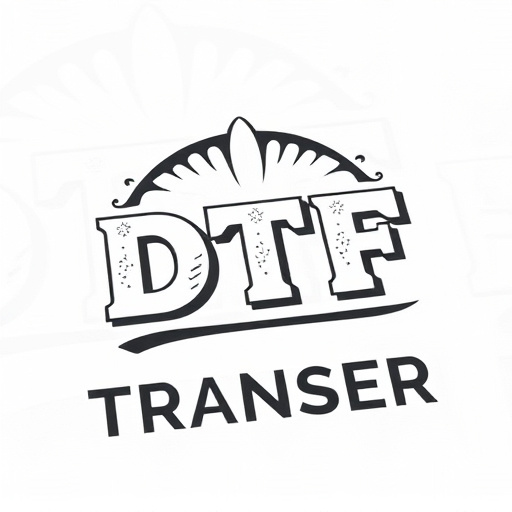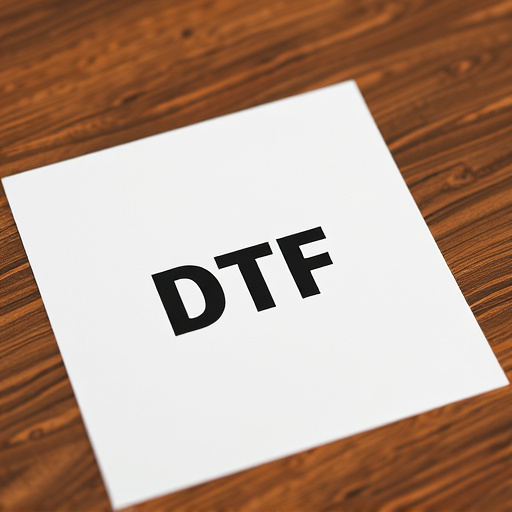Direct to Fabric (DTF) transfer printing is a revolutionary apparel industry method that bypasses traditional screen printing. Using specialized inks and heat press technology, it directly prints intricate designs onto fabric with vibrant colors and precise details. The digital setup streamlines production, significantly reducing time for bulk orders and tight deadlines. Pre-production involves calibrating printers and testing designs, while creating print-ready artwork is crucial for high-quality DTF prints. Optimizing the production environment includes strategic equipment placement and managing supplies. The process begins with graphic design, prepares designs for printing, then applies ink precisely to fabric via a heat press, curing it for permanent durability.
“Unveiling the Ins and Outs of DTF Transfer: Optimizing Production Periods for Seamless Order Fulfillment
Direct to Garment (DTF) transfer printing has revolutionized the way we produce custom apparel. This article delves into the intricate process behind DTF transfers, exploring each step from design creation to final print. We’ll dissect the pre-production phase, where designs are transformed into print-ready files and production environments are set up. Then, we’ll navigate the precise production steps, including image transfer and heat application, followed by post-print operations that ensure top-quality DTF prints.
Understanding the factors influencing production time—from order volume to material choices—is key to optimizing turnaround periods. We’ll provide actionable tips and best practices to streamline your workflow, leveraging technology and team collaboration for efficient DTF printing.”
- Understanding DTF Transfer and Printing Process
- – Definition of Direct to Garment (DTF) transfer printing
- Pre-Production Phase: Design and Setup
- – Creating print-ready designs
- – Setting up production environment, equipment, and materials
- Production Steps: From Design to Print
Understanding DTF Transfer and Printing Process

The Direct to Fabric (DTF) transfer and printing process is a cutting-edge method revolutionizing the apparel industry. It involves transferring intricate designs directly onto fabric using specialized inks and heat press technology. This innovative technique eliminates traditional screen printing methods, making it an efficient and cost-effective solution for bulk orders. With DTF, designers can achieve vibrant, detailed prints on various fabrics with remarkable speed.
During the production period, the DTF process begins by setting up the design digitally. The artwork is then printed onto a special transfer paper using solvent or UV inks. This transfer paper acts as a carrier for the design, which is subsequently applied to the fabric through heat and pressure. The result is high-quality, long-lasting DTF prints that showcase vibrant colors and precise details. This streamlined process reduces production time compared to traditional methods, making it an attractive option for meeting tight deadlines on transfer orders.
– Definition of Direct to Garment (DTF) transfer printing

Direct to Garment (DTF) transfer printing is a cutting-edge technique revolutionizing the apparel industry. It’s a direct printing method where designs are transferred onto fabric using heat and pressure, eliminating the need for traditional screen printing or lithography. This modern approach allows for intricate, full-color prints on various garments, from t-shirts to hoodies. With DTF, businesses can swiftly create custom, on-demand apparel, catering to individual customer preferences.
The DTF transfer process involves applying a special ink that adheres permanently to the garment’s surface once heated. This method ensures vibrant and long-lasting DTF prints, making it popular among brands and individuals looking to stand out. Moreover, DTF offers flexibility in design complexity and color accuracy, allowing for unique and eye-catching DTF transfer designs tailored to any occasion or target audience.
Pre-Production Phase: Design and Setup

The pre-production phase is a critical step in the DTF (Direct to Fabric) transfer process, where the foundation for successful printing is laid. This stage primarily involves design and setup, ensuring that all the necessary elements are in place before initiating the actual production run. It begins with creating digital designs tailored for DTF printing, which includes preparing artwork, graphics, or text that will be transferred onto the fabric. This digital preparation is crucial as it directly influences the quality of the final prints.
During this phase, setting up the print equipment and workspace is also essential. This encompasses calibrating printers, ensuring proper material handling, and organizing tools and supplies. Skilled technicians may need to fine-tune printer settings and test prints to achieve optimal DTF results. The pre-production setup guarantees a smooth transition from design concept to physical fabric transfer, minimizing delays and maximizing efficiency once production commences.
– Creating print-ready designs

Creating print-ready designs is a crucial step in the production process for DTF (Direct to Fabric) transfer orders. This stage involves meticulously preparing digital artwork that will be printed directly onto fabric using specialized techniques. Designers must ensure the design is optimized for DTF printing, meeting specific resolution and file format requirements. Using the right software and understanding color profiles are essential to achieving crisp, vibrant prints.
The process begins with vectorizing illustrations or high-resolution raster images tailored for the desired fabric type. Textures, patterns, and intricate details must be carefully considered to maintain quality during the DTF printing stage. Once the design is finalized, it undergoes a series of checks to guarantee it’s print-ready, ensuring optimal results when transferred onto various fabrics using DTF Printing technology.
– Setting up production environment, equipment, and materials

Setting up a production environment for DTF (Direct to Fabric) transfer orders involves careful preparation and attention to detail. Before production begins, companies must ensure their workspace is optimized for efficiency. This includes arranging and organizing equipment, such as DTF printers, cutting tables, and heat presses, in a logical sequence to streamline the manufacturing process. The production area should also be equipped with adequate materials, including various types of fabric, inks, and transfer papers specifically designed for DTF printing.
Additionally, proper safety measures should be in place to protect workers during the setup and production phases. With the right environment and resources, businesses can efficiently manage DTF orders, ensuring high-quality prints on a variety of fabrics. Each step in the setup process contributes to minimizing downtime and maximizing productivity when it comes to fulfilling transfer orders, ultimately satisfying customer demands for timely and accurate DTF prints.
Production Steps: From Design to Print

The production process for DTF (Direct to Fabric) transfer orders involves a series of meticulous steps that transform design into tangible prints. It all begins with the initial design stage, where artists create or adapt graphics using specialized software. These designs are then prepared for printing by setting the correct resolution and color profiles, ensuring optimal quality.
Once the design is ready, it’s time for the DTF printing process. The printer applies ink directly onto the fabric through a precision mechanism, creating detailed and vibrant DTF prints. This method allows for intricate patterns and high-quality visuals on various materials. After printing, the fabric undergoes curing to set the ink permanently, resulting in durable DTF transfer orders that are ready to be cut and applied to desired surfaces.














